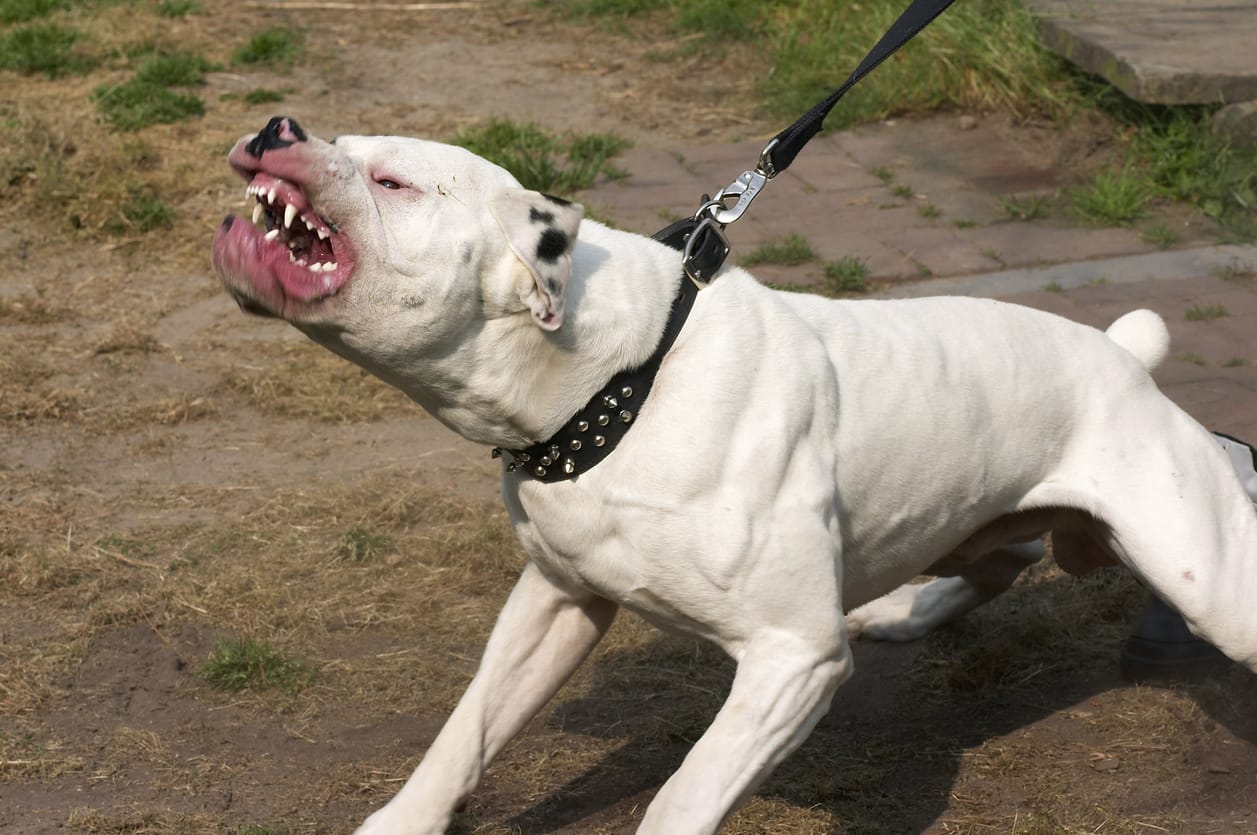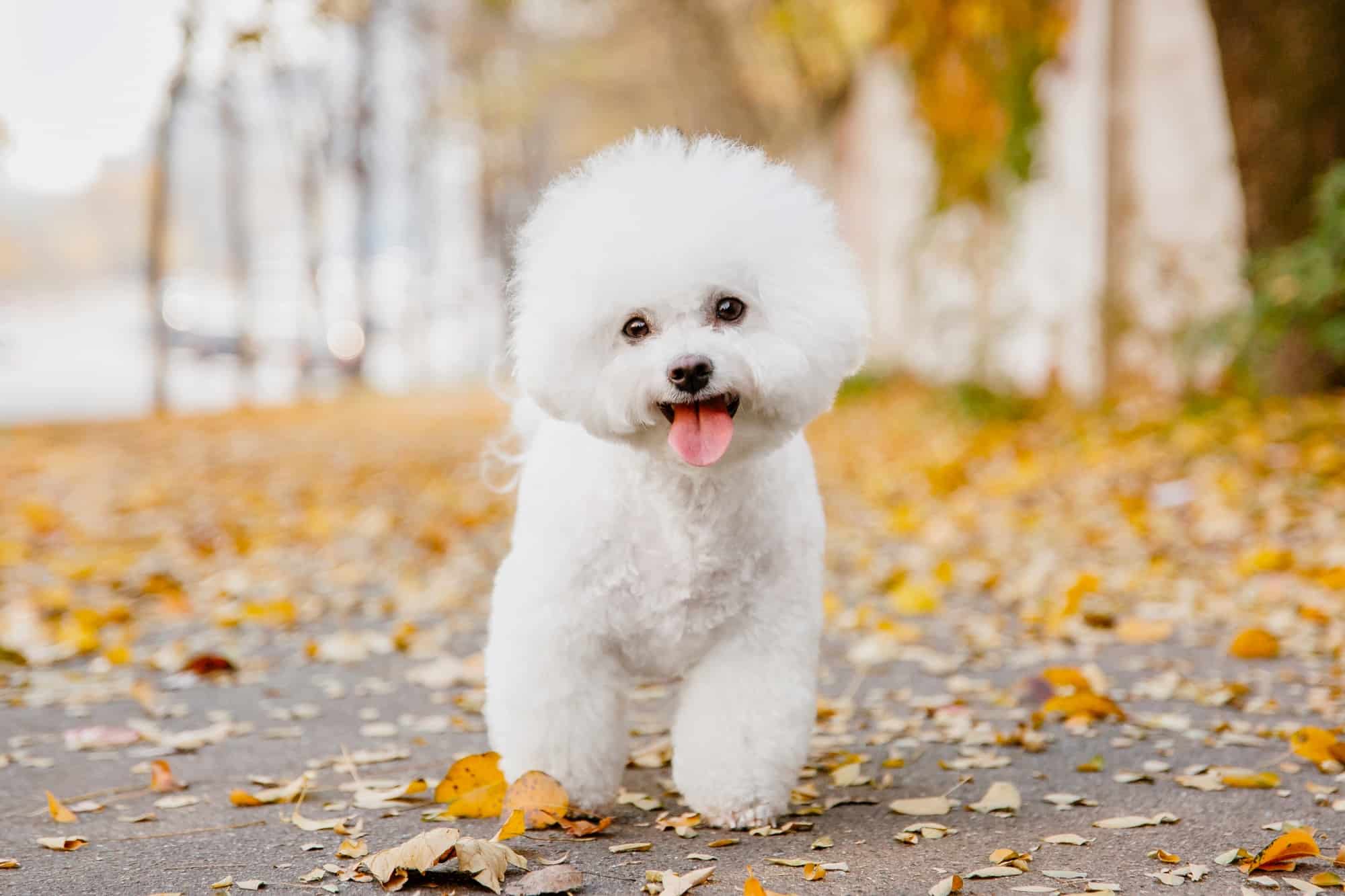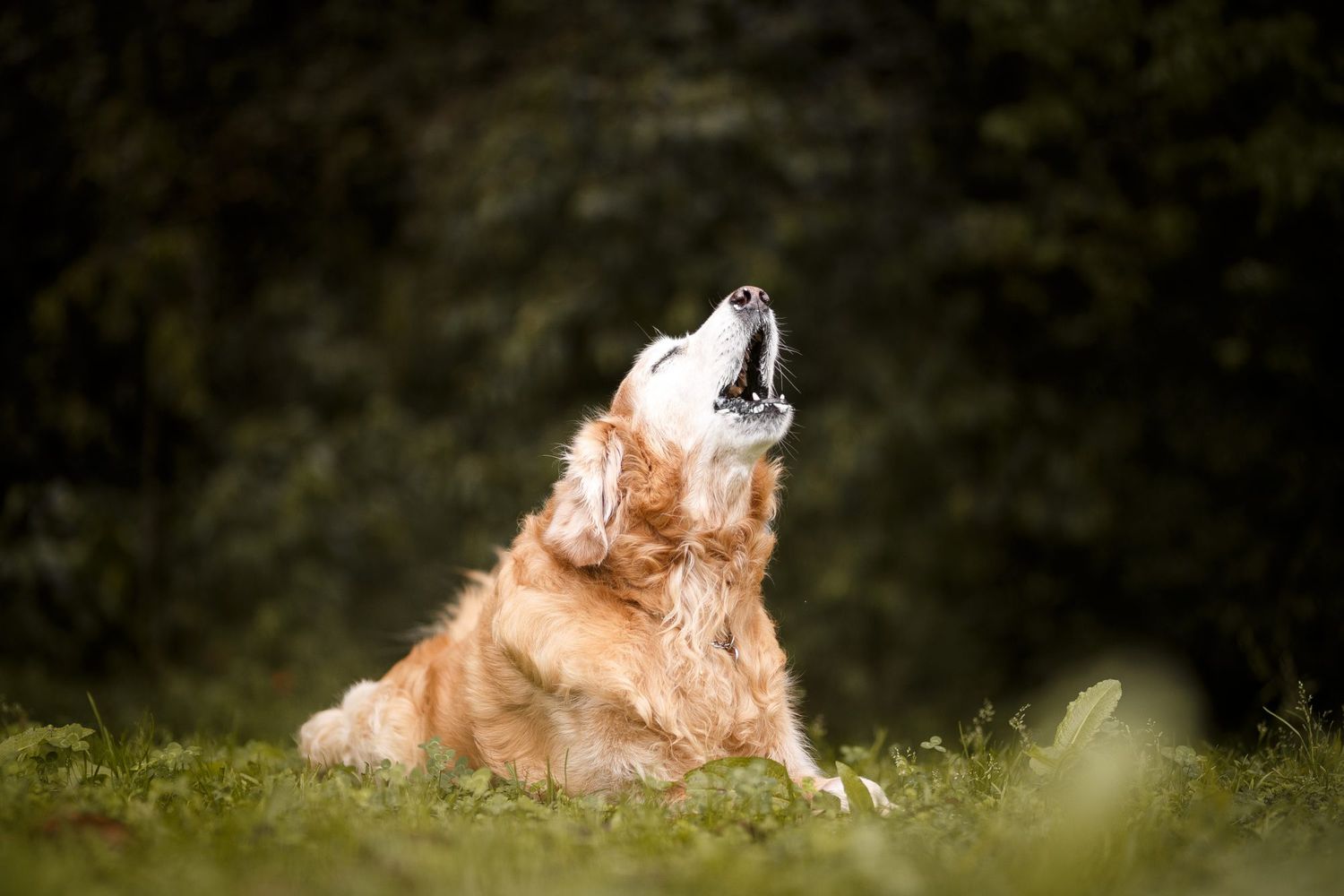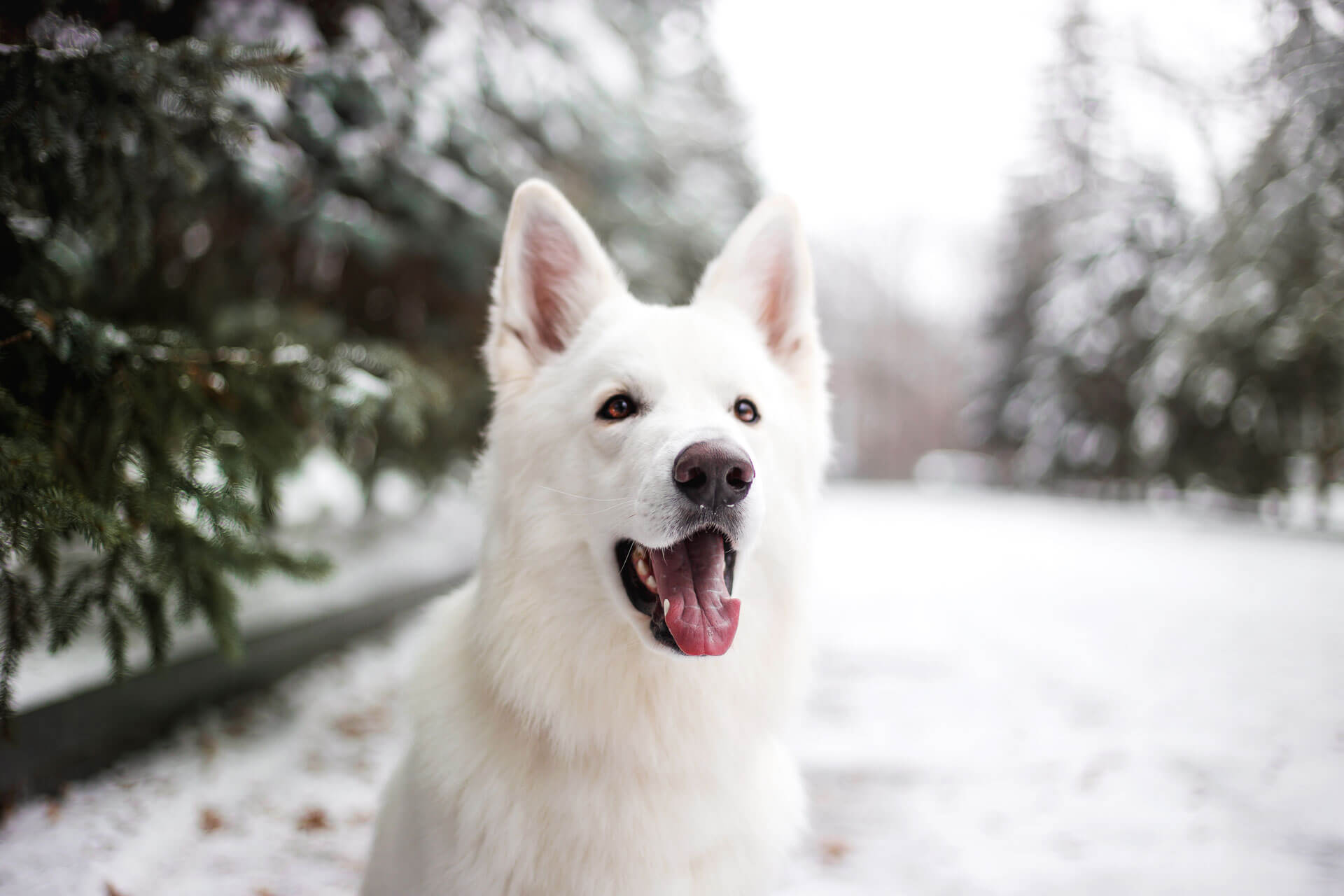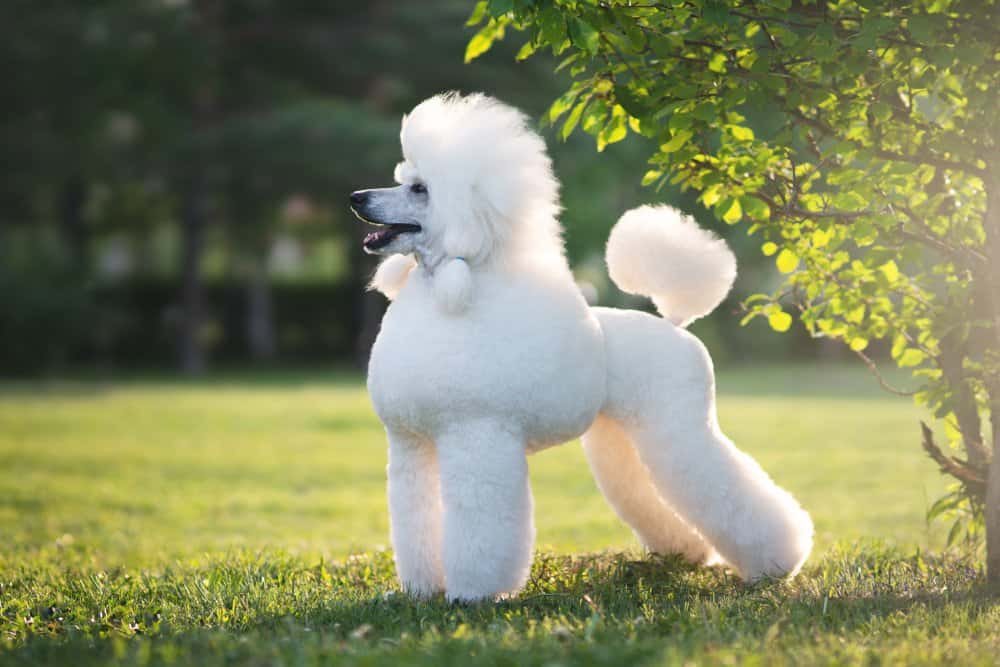Sporting dogs are a group of dogs that were originally bred to assist hunters in locating and retrieving game. They are known for their high energy levels, athleticism, and loyalty. There are four basic types of Sporting dogs: spaniels, pointers, retrievers, and setters.
Many of these breeds have well-insulated, water-repellent coats that are quite resistant to the weather, especially the water-retrieving breeds. The American Kennel Club recognizes 32 breeds in the Sporting dog group, and some of the most popular breeds in America, like Golden Retrievers and Labrador Retrievers, are Sporting dogs.
You are reading: 12 Best Types Of Sporting Dog Breeds
In this article, we will take a closer look at some of the best types of Sporting dog breeds.
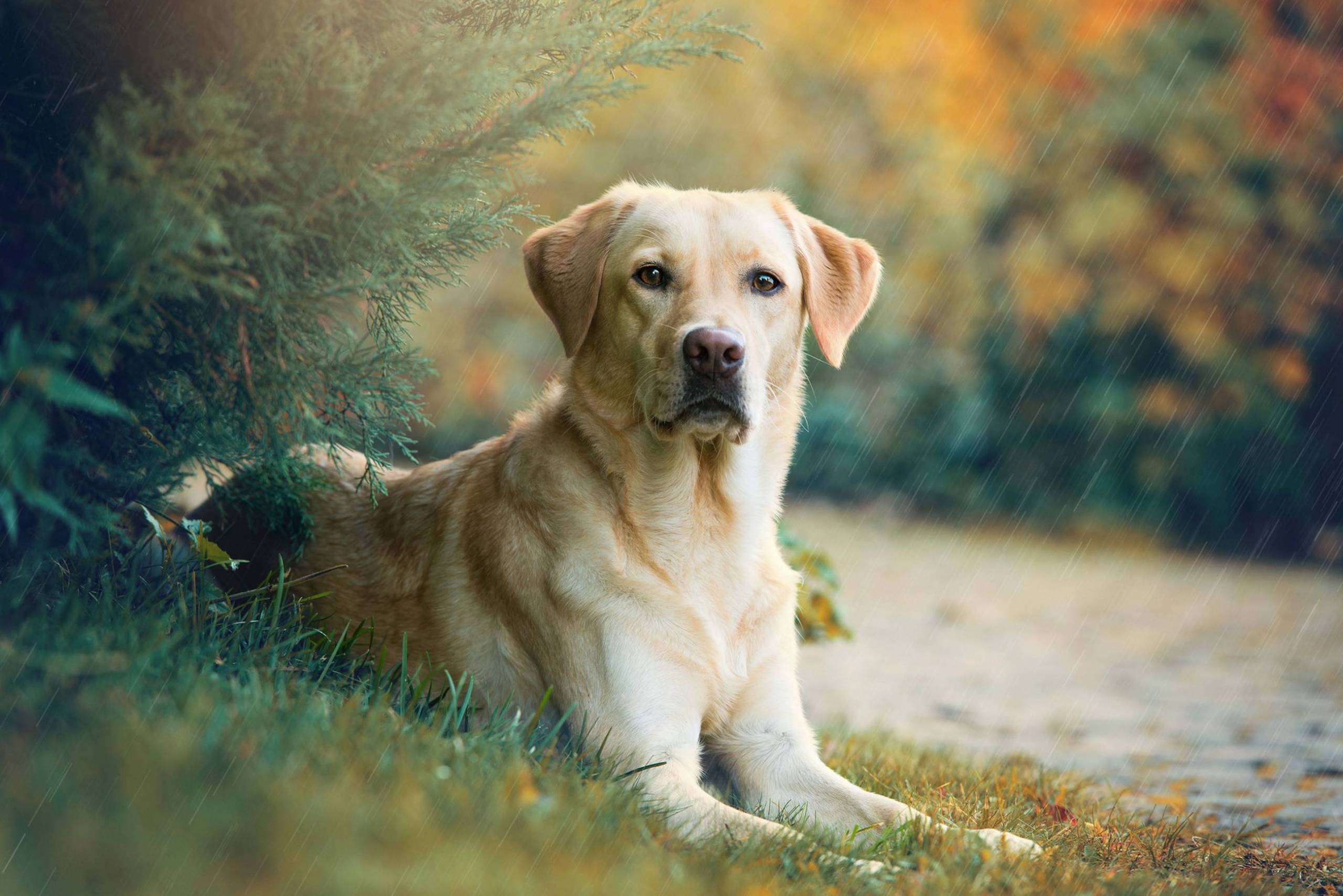
12 Best Types Of Sporting Dog Breeds
Labrador Retrievers
Labrador Retrievers are one of the most popular breeds of dogs in the United States. They are a British breed of retriever gun dog that was developed in the United Kingdom from fishing dogs imported from the colony of Newfoundland. They are friendly, energetic, and playful, and they make great sporting and hunting dogs as well as companion dogs.
They are also trained as guide or assistance dogs, or for rescue or therapy work. Labrador Retrievers are gun dogs bred to retrieve on land and water. They have a soft mouth, which allows them to carry game and waterfowl without damaging it, and they are aided by fully webbed paws, an otter-like tail, and a waterproof coat for swimming.
Labrador Retrievers are high-energy dogs that require several hours of exercise daily. They enjoy retrieving and can do so tirelessly. They are known for their intelligence, reliability, and gentle, submissive personality, which make them great family pets, especially for families with small children.
Labrador Retrievers are large-sized retrievers that can weigh between 55 and 80 pounds when fully mature. They can have black, yellow, or chocolate-colored coats.
Brittany Spaniels
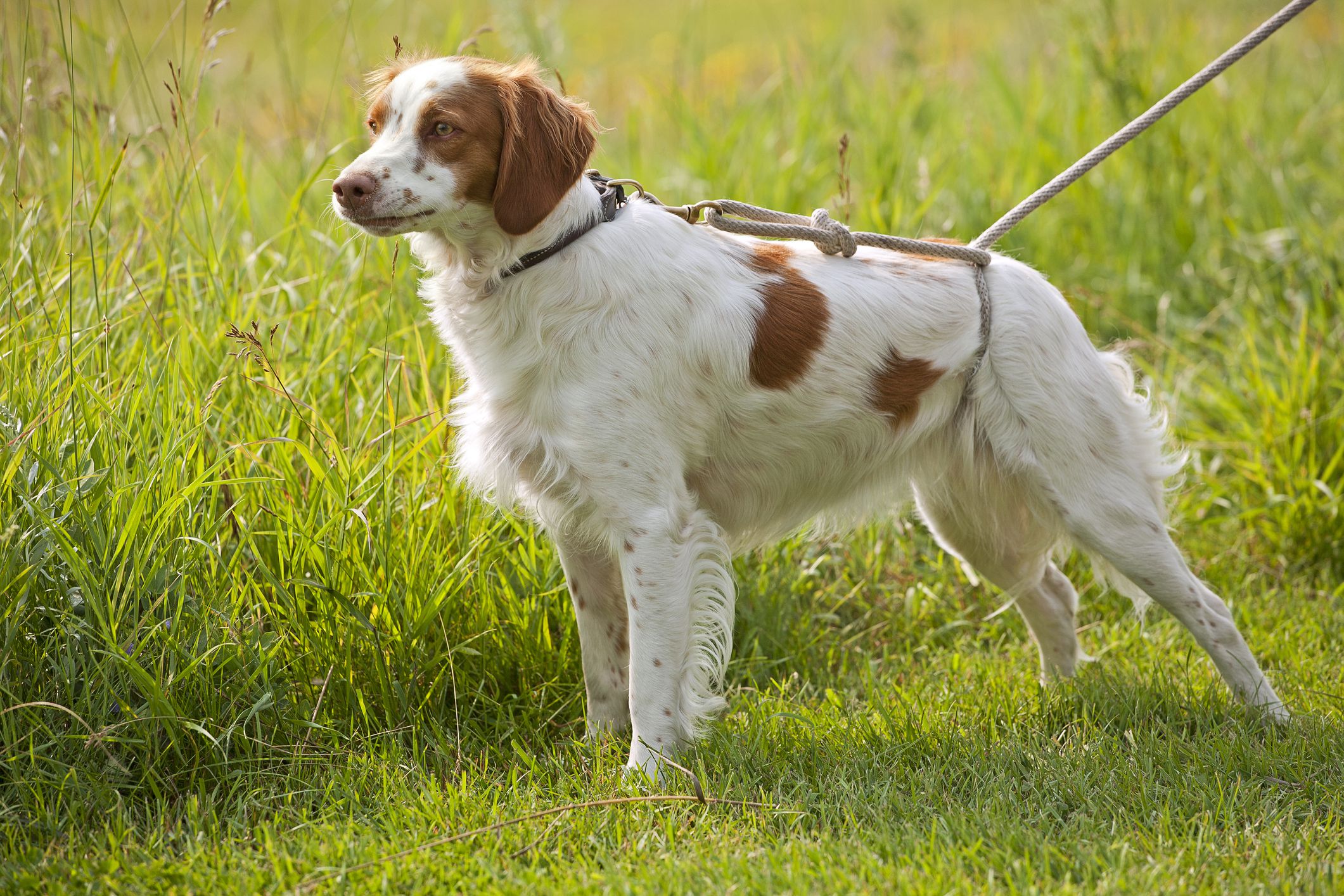
The Brittany is a breed of gun dog that was originally bred for bird hunting. Although it is often referred to as the Brittany Spaniel, they are not actually spaniels. The breed’s working characteristics are more akin to those of a pointer or setter than a spaniel.
The Brittany was first recognized as a breed in 1907 when an orange and white male named Boy was registered in France. America recognized the Brittany in 1931 and the breed was approved by the American Kennel Club in 1934.
In 1982, the “Spaniel” was officially dropped from the name, and the breed was reclassified as a pointing dog. Brittanys are rugged, strong, and quick afoot. They have a soft face that is prized by bird-dog lovers, and high-set ears that convey the breed’s essential.
They are energetic and versatile pointing dogs, renowned for their strong hunting instincts and close partnership with hunters. Despite their historical role in the field, they have seamlessly transitioned into loving and active family companions.
Brittanys are agile and affectionate canine companions that enjoy outdoor adventures and quality time indoors. They are ranked 31st among the 155 breeds and varieties registered by the American Kennel Club.
Brittanys are prone to certain health conditions, including hip dysplasia, epilepsy, and Canine discoid lupus erythematosus.
Golden Retrievers
Golden Retrievers are a Scottish breed of retriever dog that are known for their gentle and affectionate nature and striking golden coat. They were developed in the 19th century by Sir Dudley Marjoribanks (later to become Baron Tweedmouth) from Flat-coated Retrievers judiciously crossed with Tweed Water Spaniels and some other British dog breeds.
Golden Retrievers are considered intelligent, gentle-natured, and very affectionate. They are generally calm and biddable, being very easy to train and extremely keen to please their master. They are known to make excellent pets and family dogs, being generally extremely tolerant of children and keen to accompany any member of the family in a range of activities.
Golden Retrievers are one of the most commonly kept breeds of companion dog in the Western world, and are often among the top ten dog breeds by number of registrations in the United Kingdom, the United States, Australia, and Canada. They are frequently used as guide dogs and therapy dogs, and may compete in obedience trials and other dog sports.
Golden Retrievers are kind, trusting, and gentle. They are highly trainable, active, and playful, and they enjoy swimming, running, walking, and playing fetch. They are prone to anxiety if left alone for long periods and do best with a demonstrative, involved owner.
Golden Retrievers are medium-sized sporting dogs that weigh between 55 and 75 pounds, with females weighing on the lower end of this range. They have a thick, water-repellent, lustrous golden coat that can range in color from white to red.
German Shorthaired Pointers
Read more : Why Does My Dog Lick My Belly Button?
German Shorthaired Pointers are a breed of medium-sized pointing dog that were developed in Germany in the 19th century. They are energetic and powerful, with strong legs and great endurance.
German Shorthaired Pointers have a short coat that comes in various combinations, generally a mix of liver and white. They have moderately long floppy ears set high on the head, and longer, broad, and strong muzzles that allow retrieval of heavier game.
Their eyes are generally brown, with darker ones being desirable; yellow or “bird of prey” eyes are a fault. German Shorthaired Pointers are versatile hunters and all-purpose gun dogs.
They are proficient with many different types of game and sport, including trailing, retrieving, and pointing pheasant, quail, grouse, waterfowl, raccoons, possum, and even deer. They are bundles of endless energy and can become destructive, especially in their early years, if they don’t get enough activity.
German Shorthaired Pointers make loyal and affectionate family pets, and they are generally good with children and can coexist well with other pets if properly socialized. They require regular exercise and mental stimulation to expend their abundant energy.
American Water Spaniel
The American Water Spaniel is a breed of spaniel that originated in the United States. It was developed in Wisconsin during the 19th century from a number of other breeds, including the Irish and English Water Spaniels.
The breed was saved by Dr. Fred J. Pfeifer, who set up the breed club and standard, and whose work led to recognition for the breed by the United Kennel Club, and later, the American Kennel Club.
The American Water Spaniel is the Wisconsin state dog. Hunters needed a dog that could work on both land and water, a versatile hunter skilled at bringing in a variety of game. The breed is muscular and mid-sized, with a luscious brown coat that is either tightly curled or wavy.
American Water Spaniels are lively, alert, friendly, and obedient, as long as you provide fair, consistent training and leadership. They are known for their versatility and are used for a variety of activities, including agility, conformation, hunting, and sporting activities.
The breed is rare, with only around 3,000 dogs in existence, mostly around the Midwestern United States, in particular in Wisconsin, Minnesota, and Michigan.
Boykin Spaniel
The Boykin Spaniel is a medium-sized breed of dog that was bred for hunting wild turkeys and ducks in the Wateree River Swamp of South Carolina, in the United States. It is the state dog of South Carolina.
The Boykin Spaniel is only slightly larger than the English Cocker Spaniel but much heavier through the body width. Height at the withers for males ranges from 15.5–17 in (39–43 cm) and weight 30–40 lb (14–18 kg). Females are smaller, 14–16.5 in (36–42 cm) and 25–35 lb (11–16 kg).
The Boykin Spaniel is a versatile hunter, working as a retriever and upland hunter, flushing birds into flight. Pointing is not in character with the Boykin’s hunting style, but many confuse the inherent characteristic of a “hesitant flush” with pointing.
The Boykin Spaniel is a friendly, social dog that is considered a good family pet. It is easily trained and eager to work. It is good with, and extremely stable around children and other dogs.
They can sometimes be described as energetic with great endurance. They are extremely adaptable to different environments as long as they are given ample opportunity for social interaction and plenty of time to burn off excess energy reserves.
Chesapeake Bay Retriever
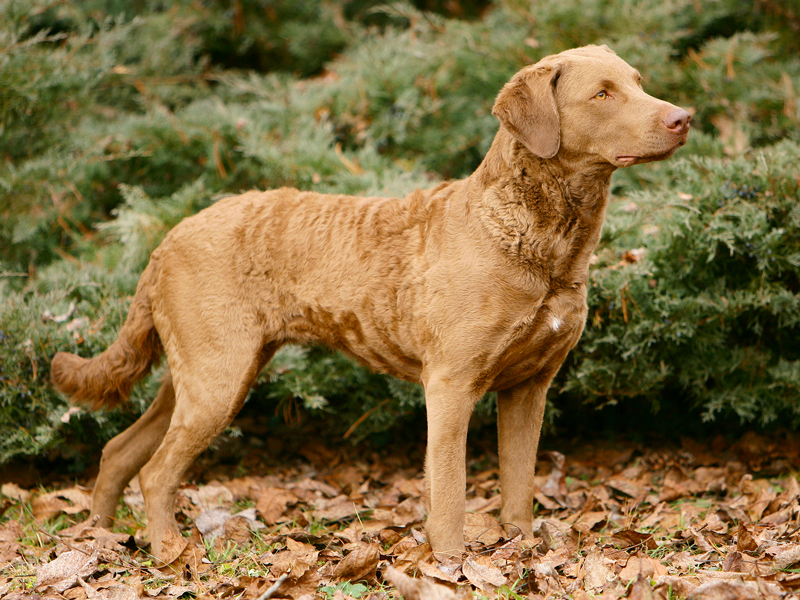
The Chesapeake Bay Retriever is a large breed of dog that belongs to the retriever, gundog, and sporting breed groups. It was developed in the Chesapeake Bay area of the United States during the 19th century.
The Chesapeake Bay Retriever is a versatile breed that competes in field trials, hunt tests, conformation, obedience, agility, and tracking, yet remains true to its roots as a hunting dog of great stamina and ability.
The breed is intelligent and learns at a high speed, but historically, it was considered stubborn and difficult to train. Chesapeake Bay Retrievers trace their history to two pups who were rescued from a foundering ship in Maryland in 1807. The breed is muscular and mid-sized, with a luscious brown coat that is either tightly curled or wavy.
Chesapeake Bay Retrievers are not as gregarious as most other retriever breeds, but they generally like children and most are friendly to strangers. They are known for their exceptional hunting and retrieving abilities, and their water-resistant double coat enables them to plunge into icy waters without hesitation, making them excellent companions for water-based activities.
Chesapeake Bay Retrievers are hardworking, loyal, and loving, and they make cherished companions with regular exercise and discipline.
Curly-Coated Retriever
Read more : What Is The Only Dog Breed Specifically Mentioned In The Bible?
The Curly-Coated Retriever is a breed of dog that was originally bred in England for upland bird and waterfowl hunting. It is the tallest of the retrievers and is easily distinguishable by the mass of tight curls covering its body. Here are some interesting facts about the Curly-Coated Retriever:
– The Curly-Coated Retriever is one of the oldest retriever breeds.
– The breed was originally developed in England, and being a long-time favorite of English gamekeepers, it was popular on the large estates.
– The ancestry of the Curly is unknown, but it has been purebred since the early 1900s.
– The Curly-Coated Retriever is a versatile breed that competes in field trials, hunt tests, conformation, obedience, agility, and tracking, yet remains true to its roots as a hunting dog of great stamina and ability.
– Curlies are soft-mouthed and regularly handle game with care.
– Curlies make excellent family pets, as generally they have a calm and steady disposition and are not as overly-energetic as some other retrievers.
– The breed is limited in numbers, with its popularity having been overthrown by the Labrador Retriever and Golden Retriever.
– The Curly-Coated Retriever’s tight, crisp curls of either black or liver serve as waterproof and thorn-resistant all-weather gear for work in thick bramble and water.
– The Curly is an active, well-muscled dog bred for upland bird and waterfowl hunting.
– Curlies are still used in many countries as bird hunting companions, including in both upland and waterfowl hunting.
Curly-Coated Retrievers are even-tempered, intelligent, affectionate, and highly energetic. They prefer to spend time with their family as opposed to being alone outdoors. They are highly energetic dogs, however, and may be too rambunctious for very small children.
They can be very reserved around strangers and will guard the family more so than some of the other sporting breeds. They should be socialized carefully from the time they are young to prevent extreme shyness around strangers.
English Setter
The English Setter is a medium-sized breed of dog that belongs to the setter group, which includes the red Irish Setters, Irish Red and White Setters, and black-and-tan Gordon Setters. Here are some interesting facts about the English Setter:
– The English Setter is a versatile breed that competes in field trials, hunt tests, conformation, obedience, agility, and tracking, yet remains true to its roots as a hunting dog of great stamina and ability.
– English Setters are classified within the gundog group in the UK and the Sporting group in America and Canada.
– The breed is intelligent and learns at a high speed, but historically, it was considered stubborn and difficult to train.
– English Setters are known for their charming personality, elegant appearance, and moderate trainability.
– They are lively, affectionate, and sociable dogs that make outstanding companions for active families and individuals alike.
– English Setters are gentle and sociable, making them wonderful with children and strangers.
– They are alert dogs and will bark alarmingly at strangers who step into their territory, but they are not considered guard dogs.
– English Setters are very active as puppies but are known to mellow out considerably when they fully mature.
– They require regular interaction with people and brisk daily walks.
– The English Setter’s coat is long, flat, silky, and a little wavy, and the eyes are large and hazel.
– A fully-grown male English Setter stands 25 to 27 inches tall and weighs 65 to 80 pounds, while females stand 23 to 25 inches tall and weigh between 45 and 75 pounds.
In essence, the English Setter is a captivating and composed canine that is a dynamic partner for a myriad of activities, while simultaneously endearing themselves to their human families with their lovable disposition and zestful spirit.
English Springer Spaniel
The English Springer Spaniel is a breed of gun dog in the Spaniel group that is traditionally used for flushing and retrieving game. Here are some interesting facts about the English Springer Spaniel:
– The English Springer Spaniel is a medium-sized compact dog with a typical lifespan of twelve to fourteen years.
– Its coat is moderately long with feathering on the legs and tail.
– The breed represents perhaps the greatest divergence between working and show lines of any breed of dog.
– A field-bred dog and a show-bred dog appear to be different breeds but are registered together.
– The English Springer Spaniel is similar to the English Cocker Spaniel and at first glance, the only major difference is the latter’s smaller size.
– However, English Springers also tend to have shorter, and higher-set ears than English Cockers.
– Springers also tend to have a longer muzzle; their eyes are not as prominent, and the coat is less abundant.
– The English Springer Spaniel ranks 13th in Stanley Coren’s The Intelligence of Dogs and is considered an excellent working dog.
– It has exceptional stamina and needs moderate amounts of activity, to focus its mind and to provide exercise, although this is different for each dog.
– Its long-legged build makes it among the fastest of the spaniels.
– English Springer Spaniels are smart, eager to please, and display a cheerful disposition with a hint of humor.
– They generally get along well with kids when raised together from puppyhood and show affection towards their families.
– Because of their affectionate nature, English Springer Spaniels aren’t solely attached to one person; they’re people-oriented and should not be left alone for extended periods.
– They’re medium-sized dogs with typical spaniel features, including a dense, medium-length coat with feathering on specific areas.
– The breed’s history includes notable achievements, such as Beechgrove Will becoming the first Champion in 1906.
– In 1913, an English Springer Spaniel was imported to Canada, leading to significant popularity in the U.S. within a decade, making it one of the American Kennel Club’s most registered breeds.
– The English Springer Spaniel Field Trial Association, established in 1924, has significantly shaped the breed’s development.
English Springer Spaniels are friendly, lively, outgoing, medium-sized dogs that require regular exercise and daily grooming. They enjoy children and adults alike and make great family pets.
Irish Setter
The Irish Setter is a breed of gundog that is known for its grace, swiftness, and flashy red coat. Here are some interesting facts about the Irish Setter:
– The Irish Setter is a medium-to-large sized dog that ranges from 25 to 27 inches in height and 60 to 70 pounds in weight.
– The breed is deep-chested with small waists and has a long neck and fairly long legs.
– The Irish Setter’s coat is long, silky, and flowing, and can be any color, but the most common colors are red, mahogany, and chestnut.
– Irish Setters are outgoing, friendly, and intelligent dogs that love to be around people and other pets.
– They are playful and affectionate dogs that make great family pets and are highly trainable.
– Irish Setters were originally bred as gundogs in Ireland for bird hunting.
– The breed is highly energetic and requires at least 30-60 minutes of exercise per day.
– Irish Setters are known for their intelligence, but they can also be mischievous and independent, requiring patience and consistency in training.
– The breed is slow to mature, so they maintain puppy-like enthusiasm and activity levels for several years.
– Irish Setters are great playmates for active older children, but they can be overwhelming for toddlers.
– The Irish Setter is the youngest of the three AKC setter breeds and probably descended from the English Setter.
– The breed was developed in Ireland to assist bird hunters before the advent of firearms.
– Irish Setters require a commitment of time, energy, and care, but they are big-hearted and will pay back with a lifetime of devotion.
In summary, the Irish Setter is a friendly, outgoing, and intelligent breed that makes a great family pet and is highly trainable. They are highly energetic and require regular exercise, but they are also known for their playful and affectionate nature. The breed’s history as a gundog in Ireland for bird hunting has shaped its characteristics and temperament, making it a great companion for active families and individuals alike.
Vizsla
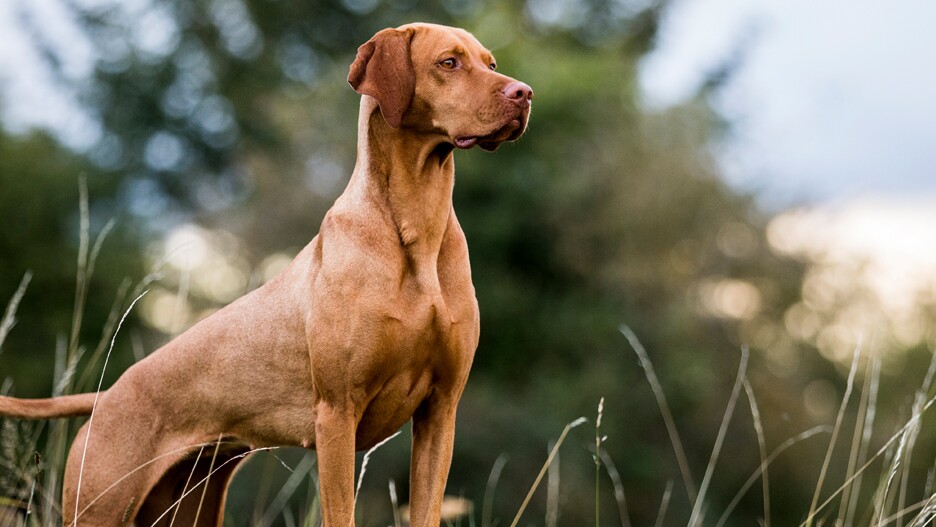
The Vizsla is a dog breed from Hungary that belongs to the sporting group. Here are some interesting facts about the Vizsla:
Appearance:
– The Vizsla is a short-coated hunting dog of distinguished appearance and bearing.
– They are lean dogs that have defined muscles and a noble head.
– The breed’s coat is short and dense, and can be any shade of golden rust.
– Vizslas are medium-sized dogs weighing 45-65 lbs, with males standing 22 to 24 inches at the shoulder and females being smaller at 21 to 23 inches tall.
Personality:
– Vizslas are very energetic, gentle-mannered, loyal, caring, and very affectionate.
– They quickly form close bonds with their owners, children, and even strangers.
– Often, they are referred to as “velcro” dogs because of their loyalty and affection.
– Vizslas will cry or whine when they feel neglected or are otherwise unhappy.
– Some will bark at strangers if they feel that they are invading the “pack” space.
– They are very good guard dogs when trained to be so.
– Vizslas thrive on attention, exercise, and interaction.
– They are intelligent dogs and need a lot of mental stimulation when young.
– If left alone for long hours, they can be bored and become destructive.
– With proper socialization and training, Vizslas are very gentle dogs that can be great around children.
History:
– The Vizsla is a natural hunter endowed with an excellent nose and outstanding trainability.
– It was bred to work in fields, forests, or bodies of water.
– Although they are lively, gentle-mannered, demonstrably affectionate, and sensitive, they are also fearless and possess a well-developed protective instinct.
– The breed has an ancient history and fulfilled the role of companion and hunter to the Magyar warriors during the Dark Ages.
– The vizsla or Hungarian pointer has been pictured in stone etchings alongside a hunter and a falcon, according to the Vizsla Club of America.
– The breed evolved from the companion dogs of early warlords and barons to coveted pets of Hungarian nobles.
– At the end of World War II, the Vizsla started arriving in the United States.
Health:
– Vizslas are considered one of the oldest-known hunting dogs and are natural athletes that aim to please.
– The high-energy, intelligent breed needs regular mental and physical stimulation, which can be everything from jogging and swimming to agility training.
– Vizslas are loyal canines that adore other members of their pack.
– They can be gentle and affectionate with children and live contentedly with other dogs and even cats, though proper (and early) socialization is essential.
– Pet parents should ensure that children and pups are always supervised during play, regardless of the breed.
FAQS
1. What are sporting dog breeds?
Sporting dog breeds are dogs that were originally bred to assist hunters in locating and retrieving game. They are known for their superior instincts in water and woods, and many of these breeds enjoy hunting and other field activities.
2. What are some of the best types of sporting dog breeds?
Some of the best types of sporting dog breeds include Labrador Retrievers, Golden Retrievers, German Shorthaired Pointers, Irish Setters, Weimaraners, and Vizslas.
3. Are sporting dog breeds good pets?
Yes, sporting dog breeds can make great pets. They are generally friendly, energetic, and intelligent dogs that require regular exercise and mental stimulation.
4. Do sporting dog breeds require a lot of exercise?
Yes, most sporting dog breeds require regular, invigorating exercise to maintain their physical and mental health. They are highly energetic dogs that need plenty of opportunities to burn off excess energy.
5. Are sporting dog breeds good with children?
Yes, many sporting dog breeds are good with children. They are generally friendly and affectionate dogs that enjoy being around people, including children.
6. Are sporting dog breeds easy to train?
It depends on the breed and the individual dog. Some sporting dog breeds are easier to train than others, but most are intelligent and eager to please, making them trainable with patience and consistency.
7. Do sporting dog breeds shed a lot?
It depends on the breed. Some sporting dog breeds have short, smooth coats that require minimal grooming, while others have longer, thicker coats that require more maintenance.
8. Are sporting dog breeds good guard dogs?
Some sporting dog breeds can make good guard dogs, but they are generally not as protective or territorial as other breeds. They are more likely to bark at strangers than to attack them.
9. Can sporting dog breeds live in apartments?
It depends on the breed and the individual dog. Most sporting dog breeds are highly energetic and require plenty of space and exercise, so they may not be well-suited for apartment living.
10. Are sporting dog breeds good with other pets?
It depends on the breed and the individual dog. Some sporting dog breeds are good with other pets, while others may have a high prey drive and be more likely to chase or hunt smaller animals. Proper socialization and training are important for all dogs to coexist peacefully with other pets.
Source: https://petstutorial.com
Category: DOGS


